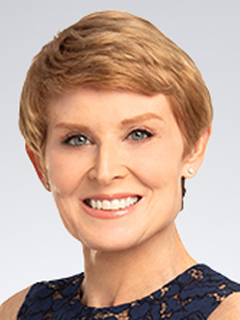Payrolls rise, revisions drag on total
Healthcare and hospitality jobs continued to expand.

November 20, 2025
Nonfarm payrolls rose by 119,000 in September while July and August were downwardly revised by 33,000. We now have two months of the year with negative prints, June and July. The three-month moving average rose to 62,300, which is double what we saw in August but not enough to hold the unemployment rate in check.
The unemployment rate rose to 4.4% from a low of 4.1% in June. That is highest since October 2021. Labor force participation hit 62.4%, up from 62.3% in August. College graduates saw the largest gains in participation, while those with less than a bachelor’s degree plummeted. Teen participation jumped; September seasonal adjustment, which expects teens to drop out due to schooling, helped buoy a surge in teen participation.
It is notable that young adults living with their parents soared to the highest levels since the height of the pandemic in recent months. The trend was upward in the 2010s. We got a brief reprieve during the hiring frenzy post pandemic. That is no longer the case. Those who have jobs are clinging to them, while those without are left wanting.
Gains in hiring by the Department of Homeland Security at the federal level mitigated the downdraft we have seen in recent months. The federal government shed only 3,000, the smallest decline since January. State and local employment rose by 25,000, mostly in education. That reverses the decline we saw in August, but state and local coffers are tight.
Private sector payrolls rose by 97,000. Gains in healthcare and social assistance dominated those gains, adding 57,100 jobs during the month. Hospitals and ambulatory care drove those increases. Some gains also showed up in individual and family services, which include child and in-home elder care. Those categories are reporting staffing shortages due to a reliance on immigrant labor. The inflation rate for child and in-home elder care soared in September.
Leisure and hospitality added 47,000 jobs, after adding an upwardly revised 32,000 in August. Food services and drinking establishments drove those gains. That is another pocket of labor shortages due to a loss in immigrant labor.
Construction added 19,000, mostly in non-residential specialty construction. That is to build data centers, where backlogs remain large.
Professional business services shed 20,000. Cuts in temporary jobs are driving those losses. The more granular data through August suggest the bulk of those losses were in blue collar jobs, a well as administrative positions. Scientific research fell again on cuts in funding. The sector is down 101,000 jobs year-to-date.
Transportation and warehousing shed 25,300, which reflects a recession in the freight industry. Manufacturing lost 6,000; upward revisions for manufacturing in previous months put losses for the year at 54,000. That is less than the 78,000 estimated year-to-date last month.
Average hourly earnings rose 0.2% in September, half the pace of August. However, the year-on-year gain was 3.8%, the same as August. The largest upside gains were in utilities, which accelerated sharply over the last two months. A pickup in demand for electricity, which was dormant until recent years, is adding to those gains. Information technology wages are up 5.2% from a year ago. That reflects a bidding war for AI talent in the tech sector. Average hours worked remained unchanged at 34.2 hours
Indeed’s hiring lab’s posted wages plummeted to 2.5% at the end of October, which is below the current inflation rate and existing wage gains. Posted wages lead overall wage gains by about six months, suggesting weakness in wages in 2026. Data by ADP reveals that the premium for job hoppers is evaporating. Small business wage gains have slipped the most this year.
The U6 measure of unemployment, which includes marginalized workers, edged down to 8.0% in September after hitting 8.1% in August. That is the second highest it has been since the latter part of 2021, when the economy was still recouping what was lost to the Covid recession. The ranks of the long-term unemployed – over 27 weeks – moved down.
However, the number of those unemployed 5-14 weeks and 15-26 weeks soared in September. That suggests we could see another surge in long-term unemployment in October, as the effects of the government shutdown exacerbate underlying weakness in the labor market.
Initial unemployment claims, which were still tallied by the states during the federal government shutdown, moved up in October. They fell in the week ending November 15, which reflects workers getting called back following the government shutdown. However, 151,000 workers who accepted earlier buyouts fell off federal payrolls on October 1.
Those out on vacation rebounded after cratering in August. The August level was the second weakest month next to August 2020, which was suppressed by the Delta wave of Covid.
Those out on parental leave hit the highest level on record in August and September. Parental leave was expanded post pandemic. Births are up even as birth rates are down. Gen Z and millennials have delayed forming households, but the ranks of those forming household and having children are surging.
Disruptions due to childcare problems reached the second highest on record in September; that does not include children out sick, just problems with childcare. The largest September on record was in 2022. Childcare costs soared at their third fastest pace on record in the CPI for September
Those accepting part-time instead of full-time work were down during the month. That includes a drop in those forced to accept part-time for economic reasons. We will not get that data for October, but it most likely rose as furloughed workers due to the government shutdown picked up odd jobs to make ends meet during the government shutdown.
Many…have joined the large minority of inflation hawks pushing against rate cuts.

Diane Swonk
KPMG Chief Economist
Bottom Line
The labor market picked up slightly in September, after being revised weaker over the summer. The gains were not enough to hold the unemployment rate in check. The data is all prior to the government shutdown. The November report is now scheduled to come out after the Federal Reserve meets on December 10. Many of those on the Fed who were comfortable with a final rate cut in December now find a lack of data on the overall labor market and inflation are a concern. Only three members of the Fed were pushing hard for a December rate cut. Expect at least one dissent on the Fed to stand pat December 10.
Explore more

Labor market chill worsens
Churn in the labor market has come near to a standstill.

KPMG Economics
A source for unbiased economic intelligence to help improve strategic decision-making.

Policy in Motion: Insights for navigating with confidence
Your resource for the latest on trade, tariff and regulatory policy changes.
Subscribe to insights from KPMG Economics
KPMG Economics distributes a wide selection of insight and analysis to help businesses make informed decisions.
Meet our team
